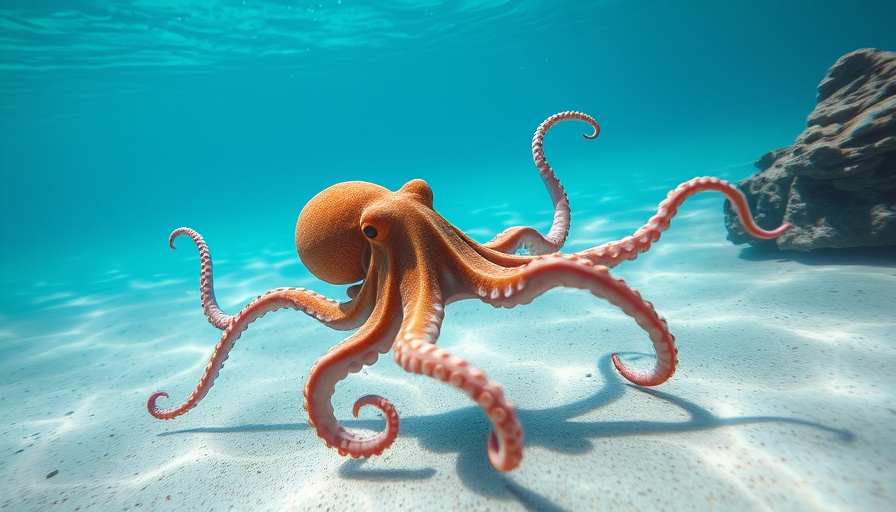
A Glimpse into Cephalopod Intelligence
Octopuses have long fascinated scientists and enthusiasts alike, particularly due to their incredible ability to camouflage, solve puzzles, and even recognize individual human faces. These remarkable capabilities are deeply rooted in their highly complex nervous systems, which comprise approximately 500 million neurons, rivaling that of dogs in sheer quantity. However, the octopus stands out in its unique nervous system architecture: it is decentralised. In fact, around 66% of these neurons are embedded in their eight arms, creating a vast network that operates semi-independently.
The Semi-Autonomous Arms: Mini-Brains of the Ocean
What does a decentralised nervous system allow? According to Galit Pelled, a professor at Michigan State University, each arm of the octopus functions as a 'mini-brain.' Each limb processes sensory input and initiates movements without needing instructions from the central brain. This means that when an octopus encounters prey or a threat, its arms can react swiftly, bringing efficiency to these agile hunters. Neural signals from the arm can predict movement type within 100 milliseconds without needing central brain interference, significantly increasing their adaptability to changing environments.
Deciphering the Nine-Armed Octopus
One compelling example of the adaptability of cephalopods is encapsulated in the case of the nine-armed octopus observed by researchers from the ECOBAR lab at the Institute of Marine Research in Spain. This octopus displayed resilience and remarkable neuroplasticity after losing an arm, showcasing how octopuses can recover and adapt both physically and neurologically. By studying such anomalies, researchers are unraveling the complexities of cephalopod adaptations, providing insights into how these creatures evolved over millennia in the ocean's depths.
Cephalopods: Evolutionary Marvels with Lessons for Humanity
Understanding octopus biology not only enhances our knowledge of marine biodiversity, but it also holds potential lessons for human ingenuity. For instance, their capacity for rapid recovery and adaptation could inspire technological innovations, particularly in fields like robotics and artificial intelligence. Imagine robots that mimic the neural agility of an octopus, capable of adjusting their movements swiftly in response to environmental stimuli. As we push the boundaries of AI and robotic design, octopuses could become the model for creating adaptable, autonomous systems that can thrive in dynamic conditions.
Future Predictions: The Continued Fascination with Cephalopods
The growing intrigue surrounding cephalopods reflects a broader societal desire to understand intelligence beyond traditional frameworks. As research continues into their complex behaviours and neural structures, societal implications arise regarding our educational systems, psychological studies, and even how we approach mental health awareness. If octopuses can thrive with decentralized control, it sparks conversations about rethinking how we perceive intelligence and autonomy in broader contexts.
Embracing the Depths of Knowledge
People often underestimate how studying octopuses can inform our understanding of biological systems and intelligence as a whole. These creatures, with their semi-autonomous limbs and remarkable neural capabilities, are more than just curiosities—they are essential to understanding evolutionary biology and fostering innovation. Advocating for ocean conservation further ensures that these species remain subjects of study, offering critical insights that can inspire future technologies.
Conclusion: Action Towards Ocean Conservation
To really appreciate and learn from the oddities of the octopus's nervous system, engaging in ocean conservation efforts is essential. Protecting their habitats ensures that we continue to study and understand these incredible creatures for generations to come. As we take action for sustainable marine practices, we should remind ourselves of the lessons these remarkable beings teach us about resilience and adaptability.
 Add Row
Add Row  Add
Add 




Write A Comment